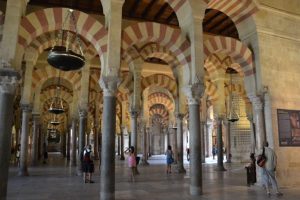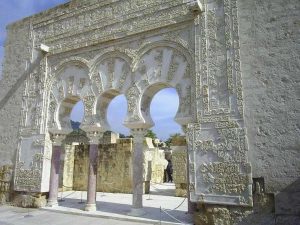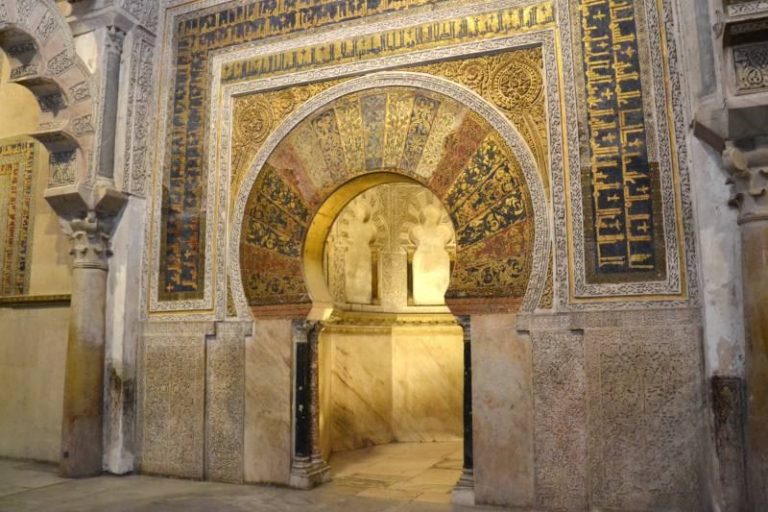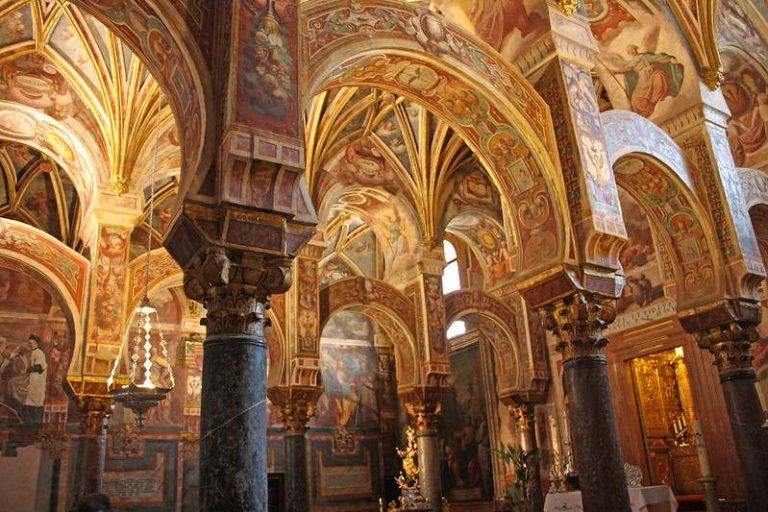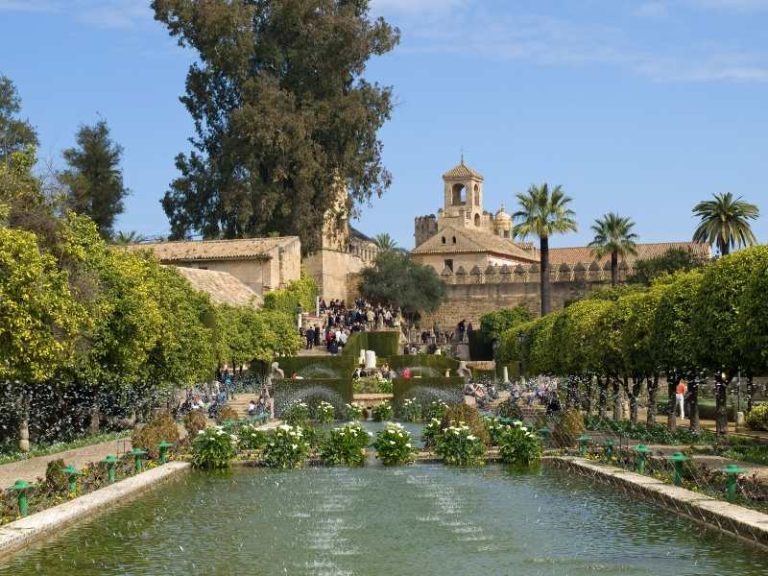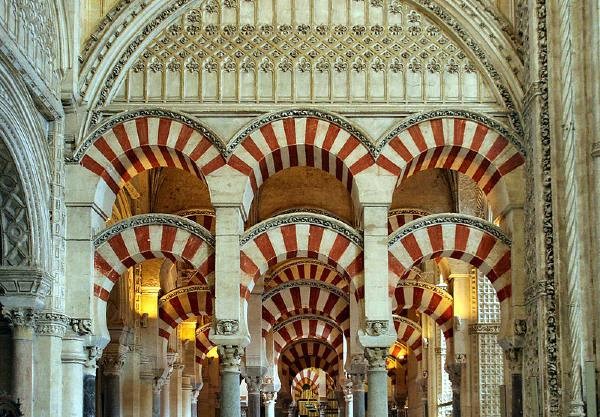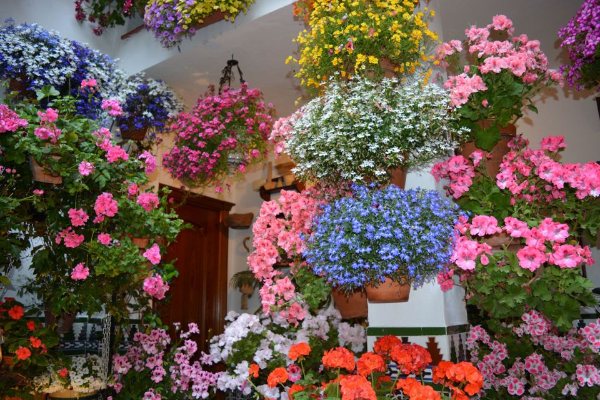
Alcazar of Cordoba: Castle of the Christian Monarchs
The Cordoba Alcazar, also known as Alcazar of the Christian Monarchs, is (after the stunning Mosque of Cordoba), the second most visited attraction in Cordoba. And it is no wonder why: its beautiful gardens, the perfect state of preservation of the walls and the imposing defensive towers, make it a magical place that just you cannot miss.
Use this table of contents to navigate
Why to visit the Alcazar of Cordoba
During roman times, this area was occupied by the Customs House and the Roman Governor’s Mansion. Later, Muslims built the old “Alcazar” which unfortunately was abandoned, looted, and destroyed. The current military building was constructed using remains of the old Alcazar by order of the King Alfonso XI of Castile in 1328.
The Catholic Monarchs (Fernando II of Aragon and Isabel I of Castile) were the most illustrious residents in the history of the “Alcazar”:
For 8 years they lived here in order to lead and oversee the Christian conquest of Moorish Granada (by then it was the last Muslim kingdom on the territory of Iberian Penisula). Thanks to their stay in Cordoba, the city became a very important center of power in 15th century.
Exactly in this period, Christopher Columbus negotiated in this building with the Catholic Queen Isabel I of Castille the funds required for his expedition to India that later ended up with the discovery of the New World as he set foot in the Americas (you can see a statue of the Catholic Monarchs and Columbus in one of the gardens of the “Alcazar”).
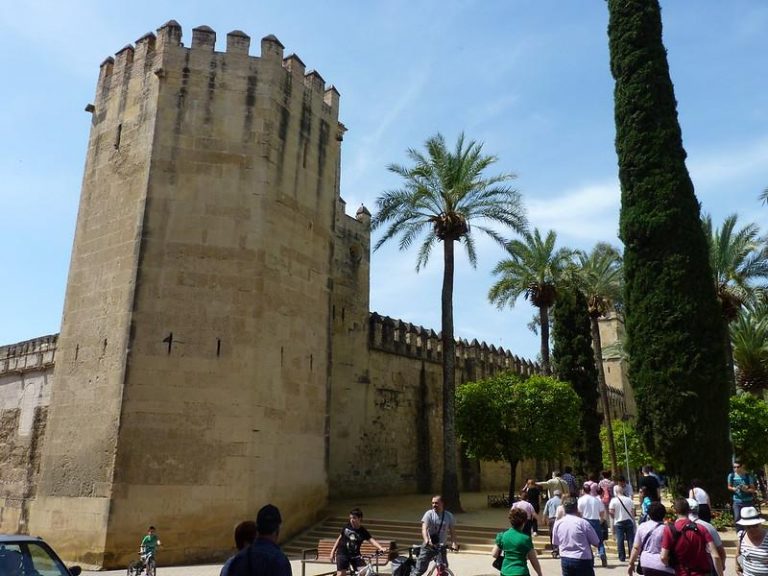
After the conquest of Granada, the Catholic Monarchs Isabel & Ferdinand left Cordoba and the building was handed over to the Catholic Church, until 1812.
Later the Alcazar was used as a civil prison until 1931. Finally, in 1955, the City Council of Cordoba took definitive possession of the building and nowadays the Alcazar hosts civil weddings and concerts, becoming one of the most visited monuments in the city.
Alcazar Cordoba Tickets
Unfortunately you cannot buy tickets online for the Alcazar in Cordoba. Therefore the only option is to buy the tickets at the box office. Don’t worry, there are usually no long lines to visit the Alcazar (max 10-15 min).
Ticket Prices:
- Regular ticket for the Alcazar: €5
- Students under the age of 26: €2,50
- Children under 13 and visitors over 65: Free admission
Inside the Alcazar of Cordoba
Undoubtedly, the best way to discover one of the most emblematic buildings of Cordoba, is to book a guided tour. But there are numerous tours and guided tour companies. Click on this link (Guided Tour Alcazar of Cordoba) and we will help you decide which is the best option for you: prices, meeting time, useful information, reviews, etc.).
The building has a rectangular shape and is surrounded by a powerful wall. At the same time, there was a tower on each corner to protect the fortress against possible attacks. Unfortunately, only two of them remain: Torre del Homenaje (Tower of Homage) and Torre de los Leones (Tower of Lions).
The current entrance to the Alcazar is located next to the Tower of Lions, the best preserved of all the towers. When you enter through this gate, you must turn left to begin the visit.
The Mosaic Room
This room, used as a chapel during Inquisition times and later as a prison chapel, is decorated with wonderful roman mosaics found at Corredera Square.
Near the entrance we can see a roman mosaic of Oceanus, son of Uranus and Gaia. The largest mosaic is located in the left part of the room and is composed of geometric shapes and figures, dolphins and anchors. In the left entrance there is an interesting mosaic of a mime during a performance. On the right side of the room, we can see an incomplete mosaic representing the four seasons, a theme tremendously popular in the Roman world.
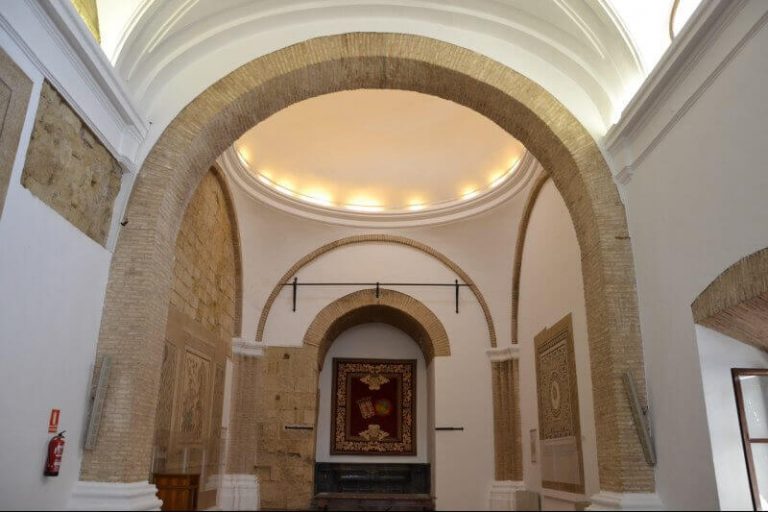
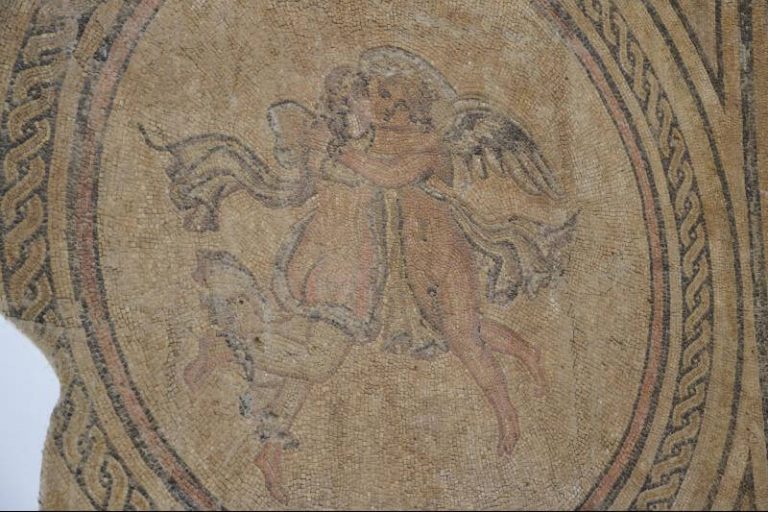
The Tower of Lions
After leaving the Mosaic Room we climb the stairs that lead us to the top of the Tower of Lions. From there cross the small corridor to reach the Tower of Homage. And even though it is unfortunately not open to the public, from up here we can enjoy a unique view of old town Cordoba: admire the Mosque-Cathedral, the narrow and winding streets of the Jewry, the beautiful gardens of the Alcazar and the Guadalquivir River.
After these romantic views, let’s return to the main entrance of the fortress to continue our visit. Then, go down the stairs to visit the Royal Baths, which are actually located below the Mosaic Room.
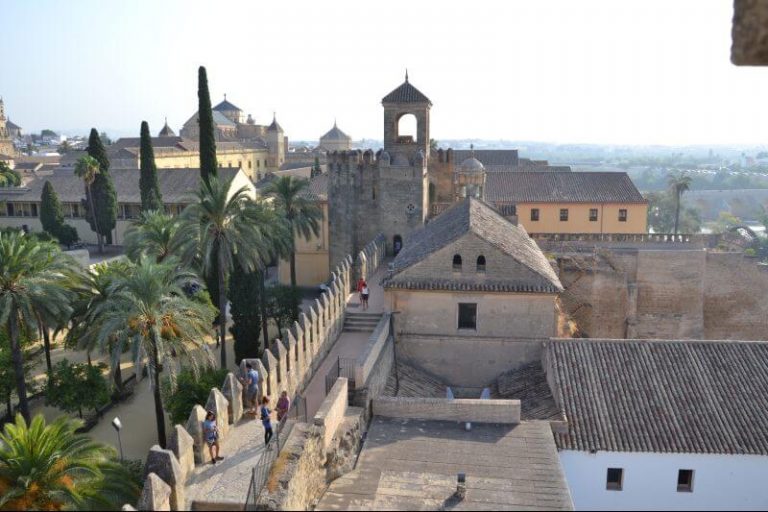
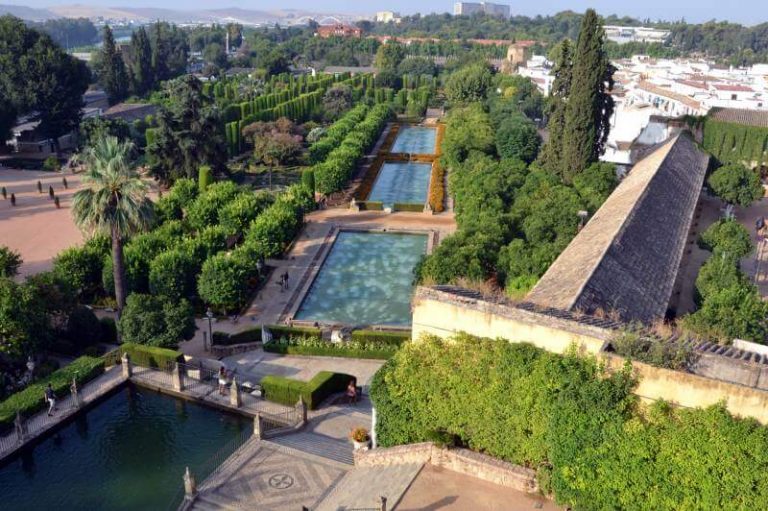
The Royal Baths
The Royal Baths were rebuilt by Alfonso XI for his wife, who spent long periods in Cordoba. These Royal Baths were designed in such a way that each room had a different use: rest room, dressing room, hot water room, boilers, etc. The water came from the Tower of Homage where was built a cistern that collected rainwater and supplied water to the different rooms of the baths through a complex system of pipes.
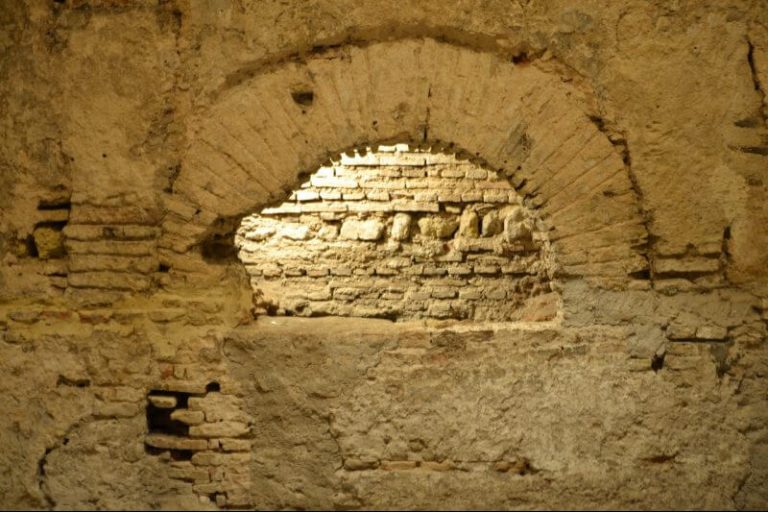
The Moorish Courtyard
The same staircase we took to visit the Royal Baths leads us also to the “Patio Morisco” (Moorish Courtyard). The King Alfonso XI built this beautiful Courtyard basing on the model of a Moorish garden. To complete the design, the King needed the assistance of Muslim artists and botanists that brought trees and plants from Middle East countries.
The small garden is divided into four parts by a corridor that crossed the garden from east to west and from north to south. In the middle of the Courtyard was placed a beautiful fountain.
In the eastern part of the Moorish Courtyard there is a modern building (20th century), which was designed to expand the number of cells for prisoners. Do not forget that the Alcazar was used as a prison during many years.
In the western part there is a gate that leads to the wonderful gardens of the Alcazar.
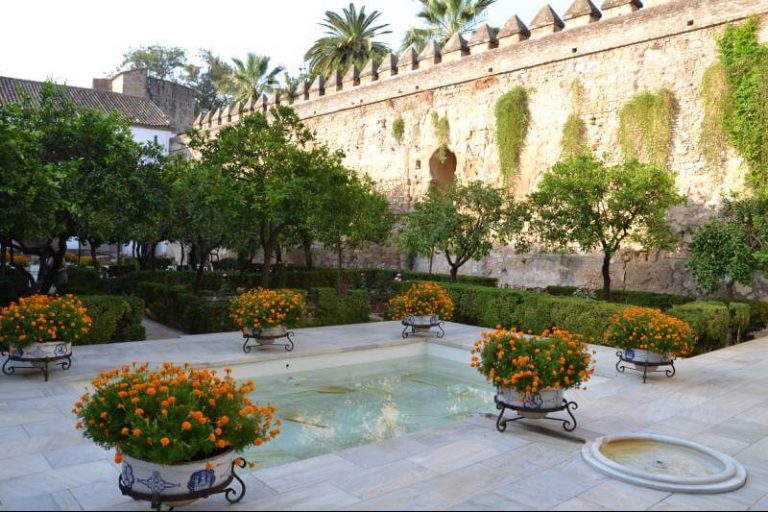
The Gardens of Alcazar of Cordoba
In Moorish times (711-1236) there were already few beautiful gardens designed for the Harem of the Caliph. But in the tenth century Abderraman III decided to move his official Residence to Medina al- Zahra, which was a place much more luxurious than the old Alcazar. This decision led to the abandonment and destruction of the original gardens.
A century later, the Christian Kings built the new Alcazar and the gardens regained their glory and beauty. The current gardens were arranged in three levels. There are also ditches, canals, fountains, small ponds with fishes, fruit trees and beautiful gardens on both sides. Difinitely worth spending some hours here, walking around and feeling the atmosphere.
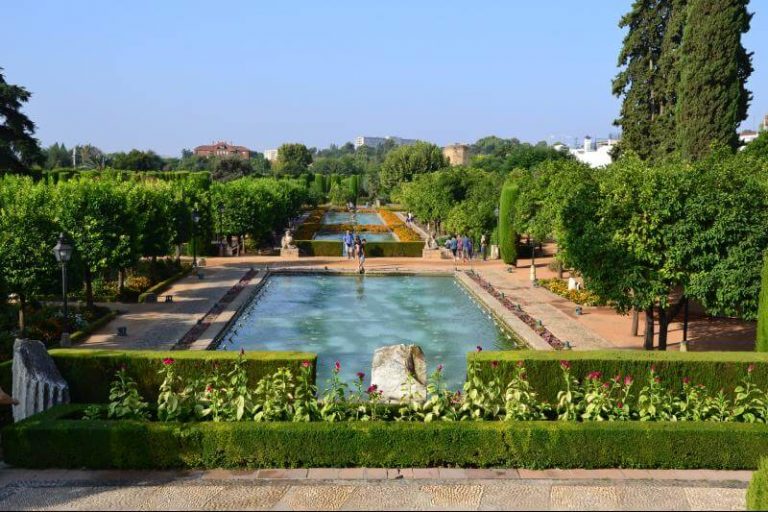
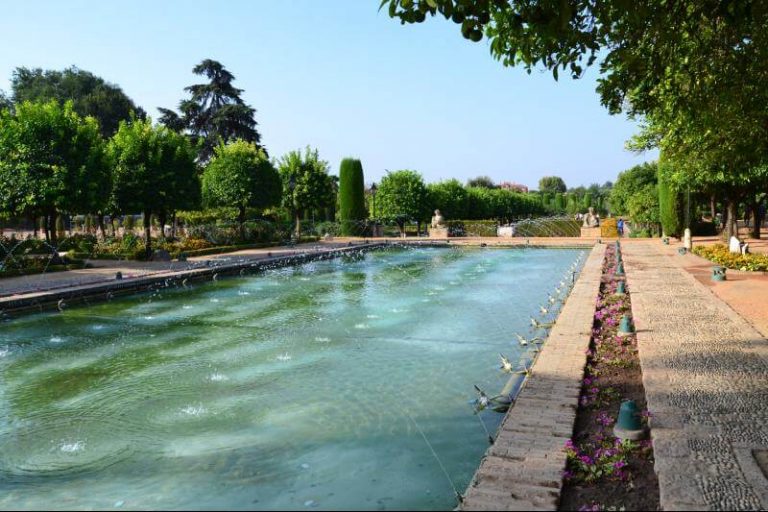
Christopher Columbus in the Alcazar of Cordoba
The biography of Christopher Colombus is confusing and full of gaps. However we know that he lived in Cordoba, where he lived an intense romance.
The illustrious explorer lived in Cordoba for several years trying to convince the Catholic Monarchs to raise funds for his expedition to America
Meetings between Columbus and the Kings in the Alcazar were frequent. But the Catholic Monarchs did not have much faith in this expedition and refused to fund it on several occasions (the Catholic Monarchs did not approve the project until 1492 when was finally conquered the last Muslim Kingdom of Granada).
Since the kings did not approve his project, the personal finances of Colombus deteriorated drastically and he ended up living in deplorable conditions in Cordoba. Desperate to find a job, he began to work selling books to survive.
During these difficult years he met Beatriz Enriquez de Arana, a humble weaver. Both fell in love and had a child, Fernando.
Finally, the Catholic Monarchs approved his project (1492) and Colombus left Cordoba to find a new route to the Far East. When Christopher Columbus returned from America (1493), he granted a pension to Beatriz and they both went their separate ways.
However, the fate draws them back together when Columbus died: the legendary explorer left a vast fortune to Beatriz.
The city remembers Columbus’s stay in Cordoba with a beautiful statue in the Alcazar gardens.
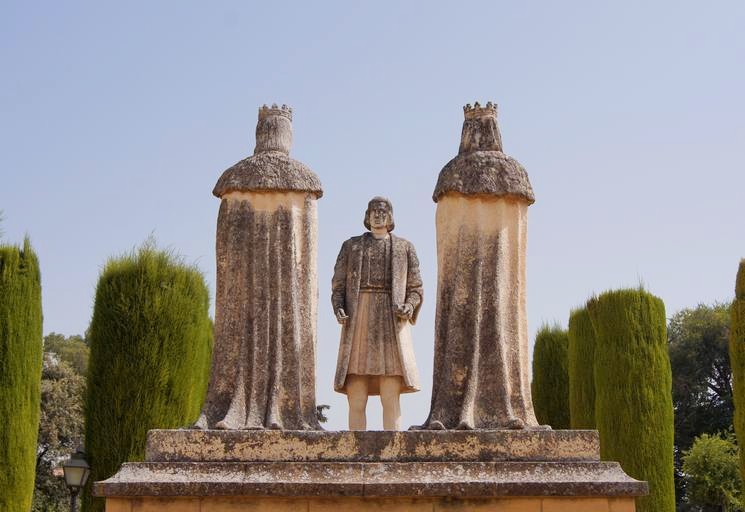
Show Magical Nights in the Alcazar of Cordoba
Magical Nights in the Alcazar is a fantastic night show of lights, music and dancing fountains.
*TEMPORARILY CLOSED*
Useful information
Address:
Calle Caballerizas Reales s/n (Cordoba Old Town)
Opening Hours Alcazar of Cordoba
- From 16th September to 14th June: from Tuesday to Saturday from 8:15am to 8:00pm /
Sunday & bank holidays: from 8.15 am to 2:45pm
- From 15th June to 15th September: from Tuesday to Sunday from 8:45am to 3:15pm
-Monday closed
Built in:
14th century (Muslim period)
Tickets Alcazar of Cordoba
General: €5
Students under 26 y.o: €2,50 euros
Free admission: children under 13 and visitors over 65
Nearby Places of Tourist Interest
-The Mosque-Cathedral of Cordoba: 650 meters (711 yards)
–The Caliphal Baths: 400 meters (437,5 yards)
-Las Tendillas Square: 1,2 kilometers (1312 yards)
–The Roman Bridge of Cordoba: 450 meters (492 yards)

